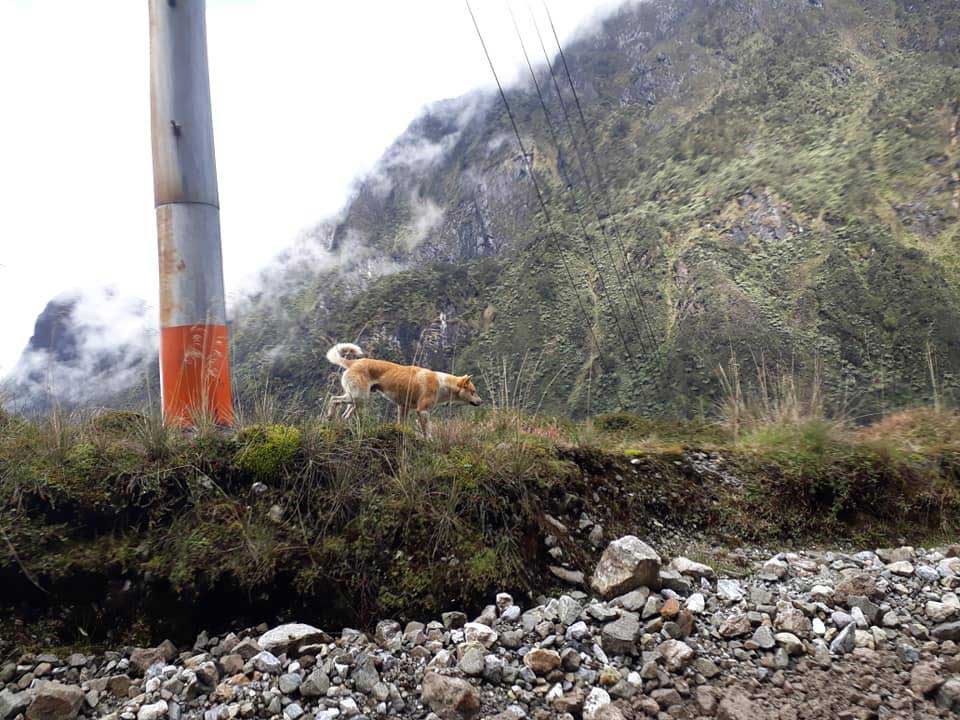The New Guinea singing dog or New Guinea Highland dog, known for making harmonic sounds with its barks and howls, was believed to only exist in captivity in conservation centers or zoos; Until now, it was seen in the wild for the first time after 5 decades.
This ancient breed has been characterized by emitting unique barks, which are compared to the sounds produced by a humpback whale.
For many years, researchers have thought that this species had disappeared from the wild due to habitat loss and extensive rearing for domestic use.
Ancient breed of dog reappears after 5 decades

For approximately 50 years there has been no record of its existence. Well, New Guinea singing dogs that remain in captivity are descendants of some wild dogs that were captured in the 1970s.

Elaine Ostrander, PHD, NIH Distinguished Investigator, told PNAS:
“The New Guinea Singing Dog we know today is a breed that was basically created by people.”
Thanks to an expedition that took place in 2016, 15 wild dogs were spotted in the remote highlands of Papua, Indonesia.

The team of researchers was able to capture an extensive photographic record, where the number and variety of wild dogs observed was evidenced. When looking at this group of dogs, the researchers thought that it was a very similar species, and that perhaps this was the original population of that species.

For this reason, the researchers organized a new scientific expedition in 2018, with the purpose of collecting biological, demographic and physiological samples.
In this way, scientists would have a basis to confirm whether these wild highland dogs are the predecessors of the New Guinea song dogs.

After studying all the data collected, the results of the research were published on August 31 of this year in the journal PNAS. Which found that a comparison of DNA extracted from the blood collected from wild dogs had very similar genomic sequences.

So, it is claimed that these two species are closely related to each other, more than any other type of canine.
Heidi Parker, PHD who led the genomic analyzes, told PNAS:
“We found that New Guinea song dogs and wild highland dogs have very similar genomic sequences, much closer to each other than any other known canid. In the tree of life, this makes them much more related to each other than modern breeds like the German Shepherd or the Basset.”

Although the genome sequences were not identical, the wild highland dogs had a 70% genetic overlap with the captive population. Thus, researchers believe that highland dogs are the original population of New Guinea’s singing dogs; and that the difference that is evidenced in their genes is due to the severe inbreeding of the animals in captivity that produces serious changes in their genome.

Elaine Ostrander said:
“Conservation dogs are super inbred; It started with eight dogs, and they have been interbred, over and over again, for generations, so they have lost a lot of genetic diversity.”
Now, researchers hope it will be possible to breed some of the highland wild dogs with the New Guinea song dogs; with the use of collected sperm samples, and thus be able to generate a true population of singing dogs.

While these two types of animals belong to the canine species Canis Lupus Familiaris, the researchers found that each contains genomic variants that do not exist in other dogs.

It is important to help preserve the original breed of this type of dog, as it can be said that they are unique in their kind.
Elaine said:
“New Guinea song dogs are rare, they are exotic, they have this beautiful harmonic vocalization that is not found anywhere else in nature, so losing that as a species is not a good thing. We don’t want to see this animal disappear.”
Facebook/ New Guinea Highland Wild Dog Foundation
Follow Pets Feed on Google News!


